Iñigo is a permaculture designer from Elorrio, Basque Country. He has a degree in Agricultural Engineering and has recently completed a Permaculture Design Course with Geoff Lawton. He is also qualified to teach primary and secondary level students. Fluent in Basque, Spanish and English, Iñigo is an agricultural entrepreneur and has already pioneered various projects in the Basque Country, including Tximitxarte, Anbotopeko and Kaka-on.

permaculture project
Today's labour,
tomorrow's harvest
As well as converting the old Olabe farmhouse into a guesthouse and cultural centre, there are 8 hectares (20 acres) of land to care for, including grazing pasture, an ancient native woodland (oak, ash, hazel, willow, holly), pine tree plots for timber and land for vegetables and small animals. We also rear sheep, turkeys, chickens and pigs at Olabe and have over 60 mouths to feed each day.
Working alongside Iñigo, the “Haziberriak” (new seeds/new learners) project is split into different stages, by order of importance, with a view to creating a sustainable ecosystem that works in time with the natural rhythm and flow of the seasons, increasing biodiversity and providing for future generations.
The food forest fence line follows the natural contour of the land in order to capture as much water as possible that will slowly feed the grazing pasture below (rather than waterlogging it). We are introducing swales and planting trees, shrubs, bushes and cover crops that will transform the soil content, supplying it with organic matter. Plants have been carefully selected according to canopy layers, shrub layers, perennial/ ground cover layers and climbers.
The aim is to increase biodiversity, creating a special tree-based ecosystem offering diverse food, material and natural medicines as well as creating an educational / recreational resource for people that want to enjoy this new unique way of understanding food production.
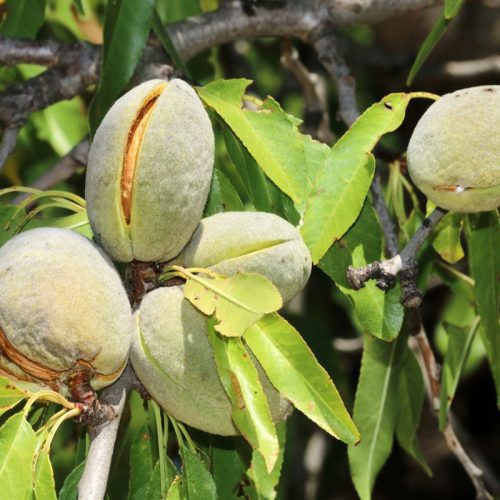
Native to central Asia, one of the first nut trees to be domesticated. A key ingredient in "turron". Beautiful pink blossom.
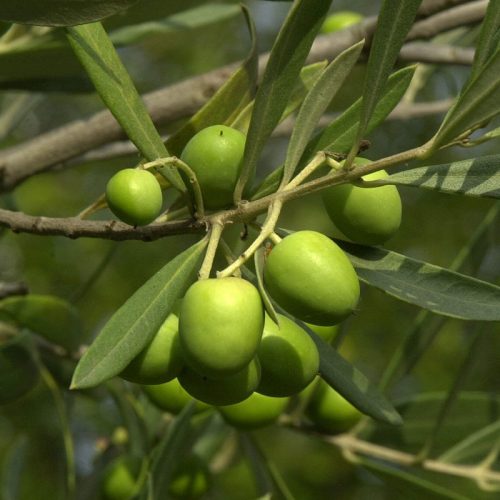
Light: Full sunlight
Size: 6-4m
Cultivation: Winter
Rustic, needs light and no wind on floration.
Do not heavy prune.
Please make sure you write "Olive" if you choose to sponsor this tree via paypal
Origins can be traced to the Mediterranean basin in the ‘fertile crescent’ & Anatolia. The Greeks are thought to have planted olive trees for their oil around 7th century BC. Olives are harvested when green & remain unedible at that stage. Some trees live for centuries.
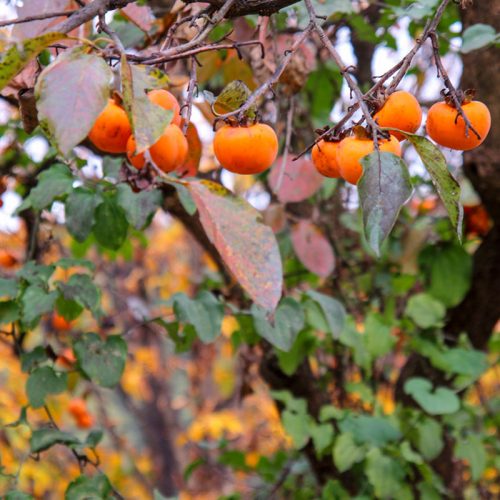
Light: Full sunlight
Size: 4 - 6m or more
Cultivation: Winter
Loves the sun, doesn't like to be transplanted.
Please make sure you write "Persimmon" if you choose to sponsor this tree via paypal
Native in China & Japan. Belongs to the genus Diospyros kaki hence the name for the fruit in Spanish being ‘kaki’.
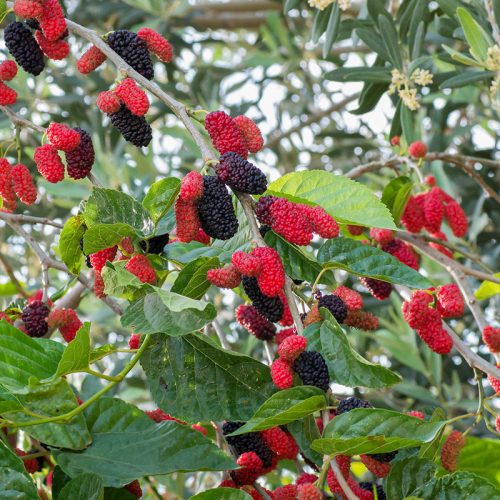
Light: Partial shade tolerant
Size: 5-10m. smaller by running
Cultivation: winter or early spring
M. nigra (black), alba (white), rubra (red)
Please make sure you write "Mullberry" if you choose to sponsor this tree via paypal
Native to Iran & S.W.Asia. fruits can be white, red or black. The leaves of the white Mulberry are the sole food source of the silkworm whose cocoon is used to make silk. In Iran the fruit is known as “shah tut”, tut being the word for raspberry.
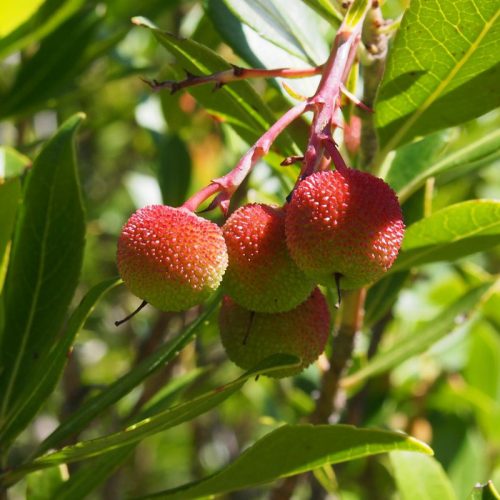
Light: Partial shade tolerant
Size: shrubby 6-8m
Cultivation: Winter on acid or neutral soil
Slow growing
Flowers October November. Same time as it ripens.
Please make sure you write "Strawberry tree" if you choose to sponsor this tree via paypal
Native to the Mediterranean region. Not related to the strawberry plant. Fairly drought resistant. It forms part of the Madrid coat of arms.
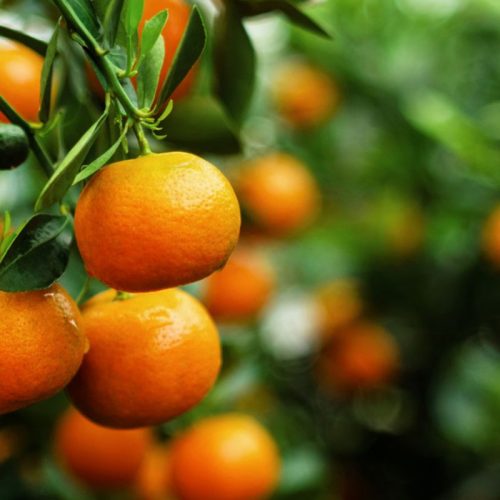
Light: Full sunlight
Size: 4,5 / 4,5 (planting framework)
Cultivation: Winter
Fertile and aerated soil needed.
Please make sure you write "Tangerine" if you choose to sponsor this tree via paypal
Thought to be native in Vietnam & S.W. China. The word in Chinese is ‘kan’. Our word tangerine (citrus reticula) derives from the port of Tangiers from where they were exported. Difference between tangerines & mandarins is their skin colour, tangerines being darker.
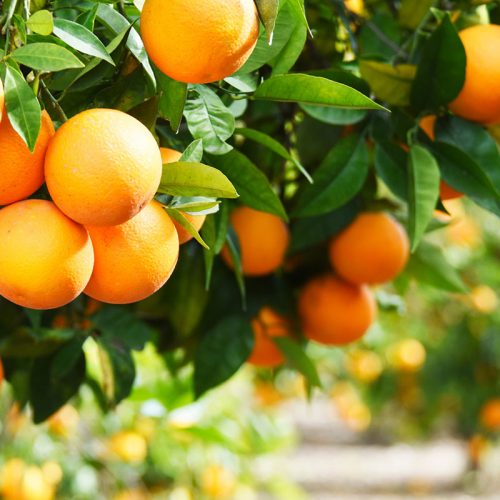
Light: Full sunlight
Size: 4 / 6m (planting framework) 3-5m high
Cultivation: Winter
Needs abundant watering
Please make sure you write "Orange" if you choose to sponsor this tree via paypal
Native to southern China & N.E. India. The name ‘orange’ derives from the Sanskrit ‘naranga’. Because Portuguese merchants introduced the sweet orange to Europe, the name for orange in many languages is ‘portughal’, such as in Persian or Turkish.
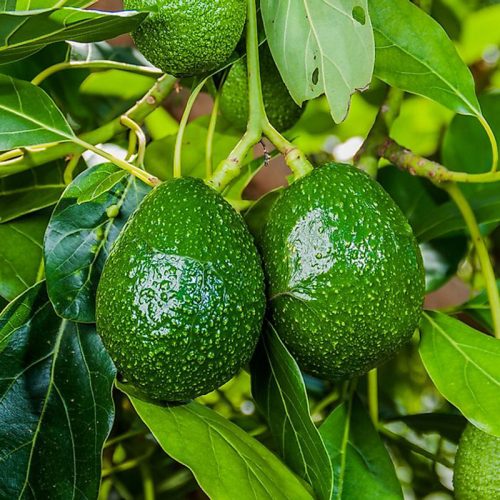
Light: Full sunlight
Size: 10m... or more
Cultivation: Winter
Superficial roots. Little acid soils. Lots of organic matter. High rainfall.(no flood). Cross pollination. No wind.
Where oranges will grow. Transplant in March/April (not colder months)
Please make sure you write "Avocado" if you choose to sponsor this tree via paypal
Believed to have originated in Mexico; the name is a corruption of the Aztec ahuacatl; hence the Spanish name aguacate. Can be grown quite easily from its stone.
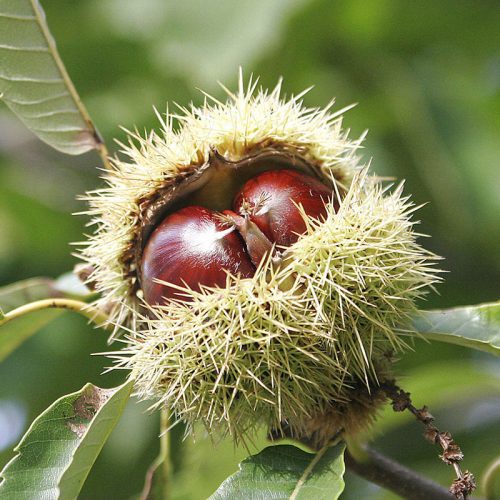
Light: Full sunlight
Size: 15m- 10m
Cultivation: Winter
Coppice them every 10 years with 8 m high.
Likes sun and well drained acid- neutral soil.
Good pollinator. cross pollination.
Please make sure you write "Chesnut" if you choose to sponsor this tree via paypal
Native to southern Europe & near East. Distantly related to the horse chestnut. Its Latin name castanea is thought to come from the ancient Greek town of Kastanea in Thessaly, northern Greece. Often grown for coppicing.
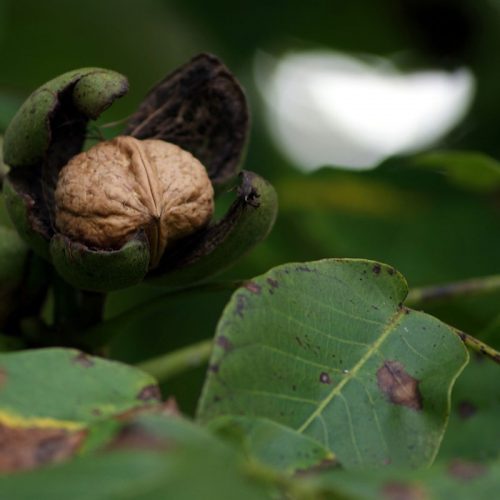
Light: Full sunlight
Size: 20m- 15m
Cultivation: Winter (Give sunny site. dislikes transplanting)
Allelopathic substance leaves and roots! apples, beans, tomatoes
Please make sure you write "Walnut" if you choose to sponsor this tree via paypal
Indigenous to Anatolia & as far east as Afghanistan. The Greek name was Dios balanos or God’s acorn. The Romans translated this as Jovis glans but later transferred that name to the walnut, hence Juglans.
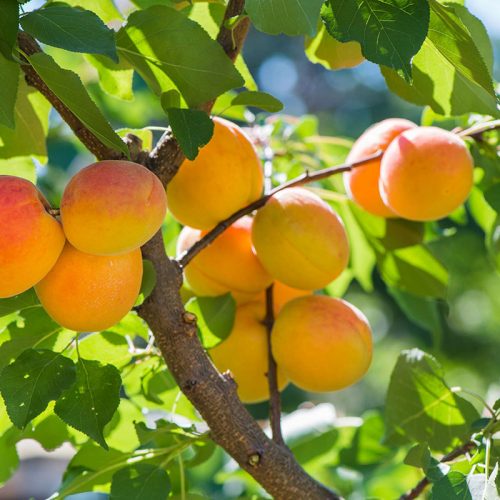
Light: Full sunlight
Size: 4m wide x 4m high
Cultivation: Winter
A relatively small, yet beautiful tree. A late frost can wipe out the crop so we will be on our guard. The unique micro-climate at Olabe means that we get very few frosts, but we will protect it just in case with sheep's wool at its base.
Please make sure you write "Apricot" if you choose to sponsor this tree via paypal
From the Arabic al-barqu’uq, 1st cultivated in Moorish Spain, but native to northern China. Introduced by Arab traders.
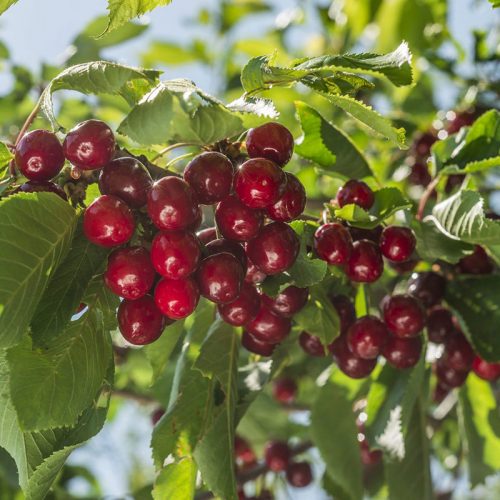
Light: Some shade tolerant
Size: 6m wide x 8-10m high
Cultivation: Winter
Please make sure you write "Sweet Cherry" if you choose to sponsor this tree via paypal
Native to the Near East and E. Europe. The name cherry derives from the Latin cerasum, which in turn came from Giresun, Turkey, via Greek traders.

Light: Partial shade tolerant
Size: 6/2,5 - 7/5m
Cultivation: Winter
Bullaces naturalized on english hedgerows. Black, yellow green. Dont need annual prunning. (Tip bearers)
Please make sure you write "Plum" if you choose to sponsor this tree via paypal
Native to Syria, Iran & Anatolia. Also grown in China & Japan long before Europe. Possibly one of the first fruits to be domesticated. Cultivars of the plum (prunus) include greengages & damsons.
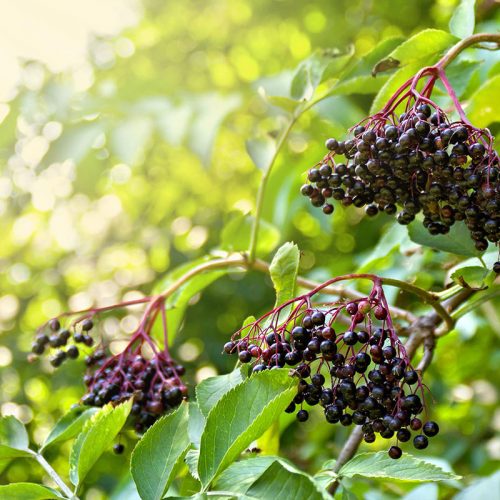
Please make sure you write "Elderberry" if you choose to sponsor this tree via paypal
Used to make wine from the berries. Uncooked, they can cause vomiting. Often used as a pigment for food colouring.

Light: Full sunlight
Size: 5m wide x 5m high
Cultivation: Winter
Needs loads of water and nutrients. Will need to protect it from the wind.
Please make sure you write "Lemon" if you choose to sponsor this tree via paypal
Like most citrus trees, the lemon is native to southern China & N.E. India. The word lemon is a corruption of the Arabic limoon which in turn derived from the Sanskrit nimbu.
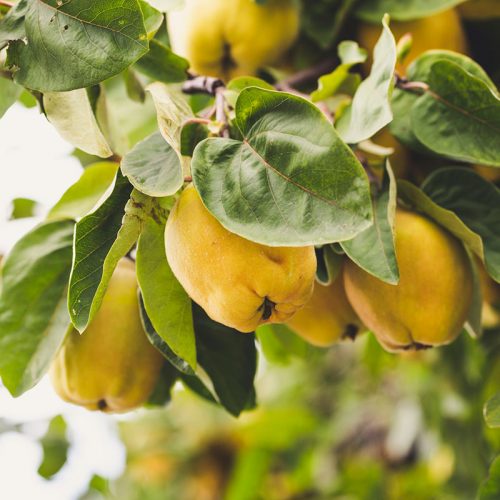
Light: Full sunlight
Size: 2.5m wide x 4m high
Cultivation: Winter
Quince grows well in the Basque Country and doesn't require much pruning. Its fruit makes excellent quince jelly or "membrillo", which is delicious when paired with sheep's cheese and walnuts.
Please make sure you write "Quince" if you choose to sponsor this tree via paypal
Native to northern Iran and neighbouring Turkmenistan. Gets its name from the Greek Cydonian apple which comes from the genus Cydonia. Difficult to eat raw. Main ingredient of the Spanish dessert membrillo.
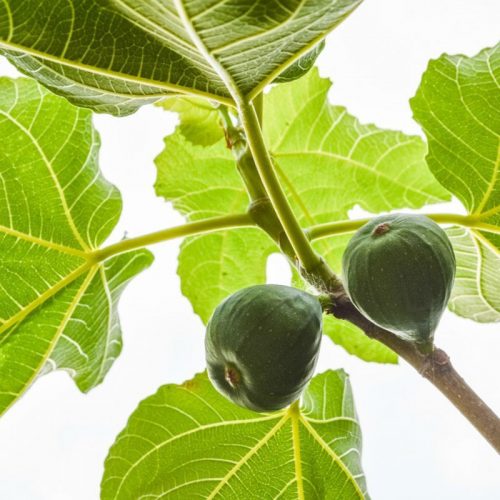
Light: full sun-shade tolerant
Size: 3m wide x 6m high
Cultivation: Winter to Spring
Please make sure you write "Fig" if you choose to sponsor this tree via paypal
Thought to originate in the fertile crescent (Syria & Iraq) and further east to western Afghanistan. Common in biblical times.
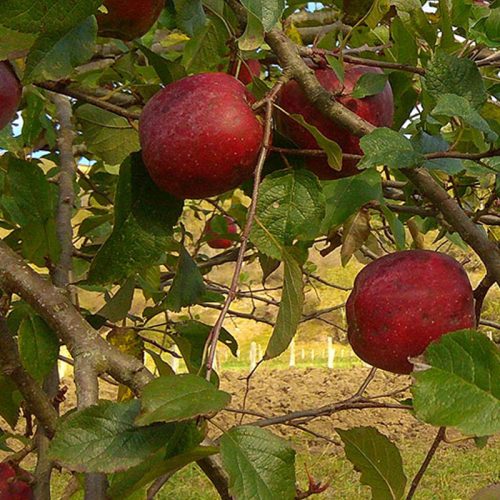
Light: Full sun-partial shade tolerant
Size: Own root: 6m high. Dwarfted: 2.5/4m- 3.5m (depends)
Cultivation: Winter
Needs N K (we will plant Comfrey Symphytum, N fixers around)
Please make sure you write "Apple" if you choose to sponsor this tree via paypal
Native to eastern Anatolia (Turkey), and the Caucasus; thought to originate in central Asia (Uzbekistan, Kyrgyzstan).
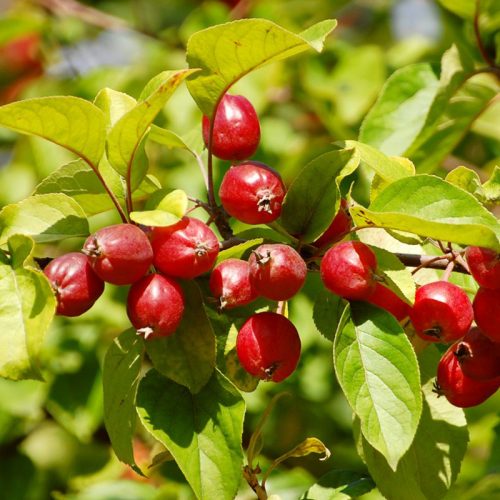
Light: Shade tolerant
Size: 2m wide x 3m high
Cultivation: Winter
Please make sure you write "Crabapple" if you choose to sponsor this tree via paypal
Belongs to the apple, malus family. Used as a rootstock on many cultivated apple trees as well as being a good pollinator in apple orchards.

Light: Shade tolerant
Size: 4/6m - 3/5m
Cultivation: Winter
Please make sure you write "Medlar" if you choose to sponsor this tree via paypal
Native to Iran & S.W Asia; a member of the rose family. Self fertile. Has an image problem because the fruit has to be “bletted”, that is left on the tree or in storage until very soft, almost “rotten” when it can then be eaten. But worth the wait. In French the name is “cul de chien”!
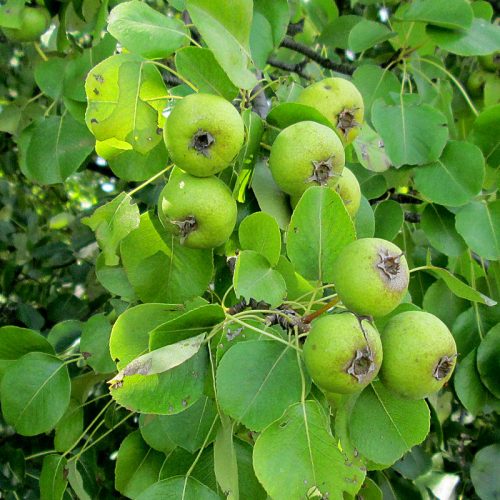
Light: Partial shade tolerant
Size: smaller tree
Cultivation: Winter
Please make sure you write "Wild pear" if you choose to sponsor this tree via paypal
Native to Europe & the Caucasus. Quite rare. Insects love its flower nectar. Fruit is almost too hard to eat, but mammals love it.
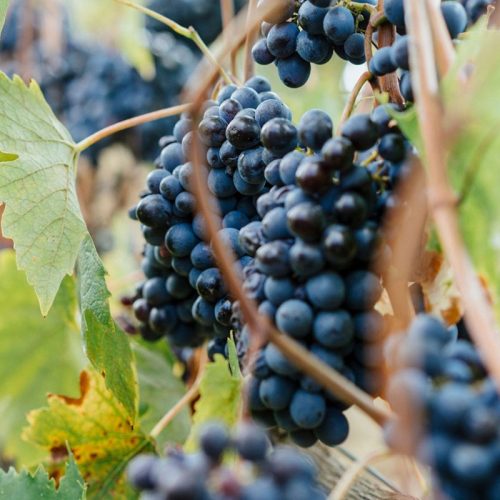
Light: full sun
Please make sure you write "Grapes" if you choose to sponsor this tree via paypal
Native to the near East (eg Armenia), central Asia & America. European vines were decimated by the phyloxera insect in the early 1900’s & replanted onto American resistant rootstock vines.
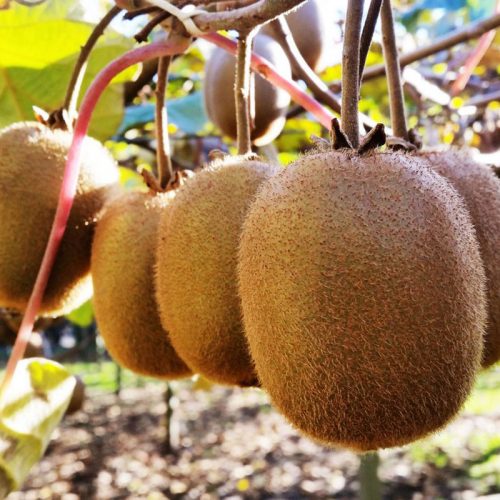
Light: Full sun-partial shade tolerant
- Cane/stake/support.
- Male /female
- Sheltered from wind. wet feet
Please make sure you write "Kiwi" if you choose to sponsor this tree via paypal
Also known as Chinese gooseberry. Native to central & eastern China. Became popular with New Zealand growers, hence the fruit’s name. The plant can be either male or female; commercially, you need one male plant for every 5-8 female ones.
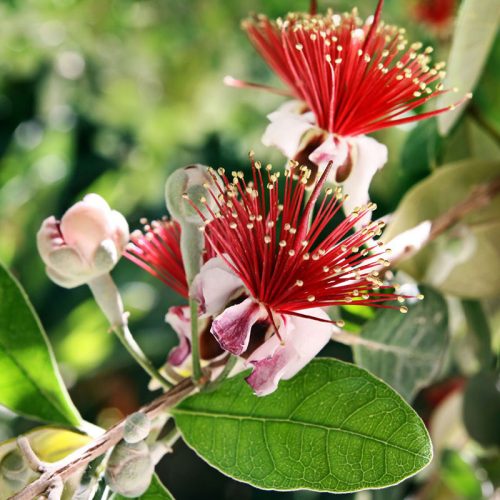
The fruit, known as feijoa maturing in autumn, is green, ellipsoid, and about the size of a chicken egg. It has a sweet, aromatic flavour, which tastes like pineapple, apple, and mint. The flesh is juicy and is divided into a clear, gelatinous seed pulp and a firmer, slightly granular, opaque flesh nearer the skin. The fruit falls to the ground when ripe and at its fullest flavour, but it may be picked from the tree prior to falling to prevent bruising.
The fruit pulp resembles the closely related guava, having a gritty texture. The feijoa pulp is used in some natural cosmetic products as an exfoliant. Feijoa fruit has a distinctive, potent smell that resembles that of a fine perfume. The aroma is due to the ester methyl benzoate and related compounds that exist in the fruit.
--
Please make sure you write "Feijoa" if you choose to sponsor this tree via paypal
Native to southern Brazil & surrounding countries; belonging to the myrtle family. Fruit resembles guava. Frost tolerant.
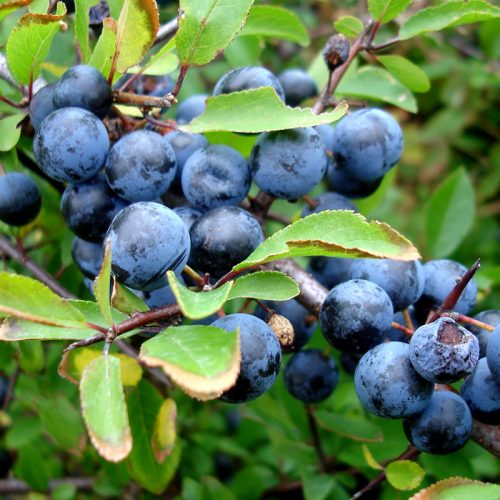
Great for making Patxaran. Berries typically harvested here after the first frost.
Please make sure you write "Blackthorn" if you choose to sponsor this tree via paypal
Native to northern Europe; produces its white flower before the leaves. Its fruit, the sloe, is used to make patxaran (sloe gin). Used in stock-proof hedges due to its sharp thorns and spreading habit.
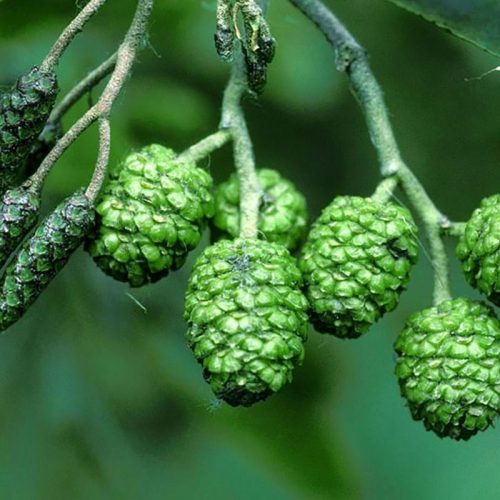
Description coming soon...
Please make sure you write "Alder" if you choose to sponsor this tree via paypal
Alders have the ability to interact with certain nitrogen-fixing soil bacteria. This results in the formation of root nodules to provide fixed nitrogen to the host plant in exchange for reduced carbon.
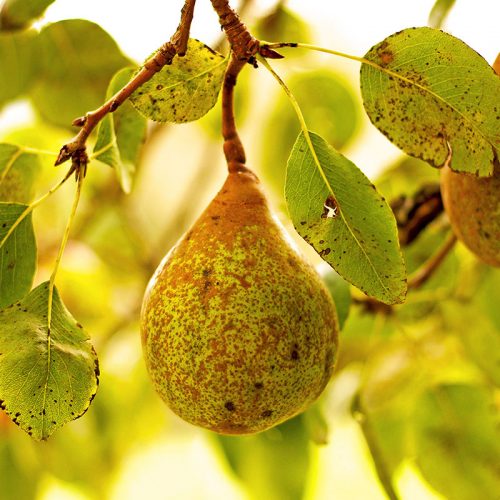
Please make sure you write "Pear" if you choose to sponsor this tree via paypal
Thought to originate from the Near East, around northern Anatolia. Basque has 3 words, udarea, madaria and makatza. Presumed that the Basques, who were pre Celt, were already cultivating pears.
A beautiful, tall and strong tree, the Ash has long been regarded a special tree.Its helicopter seeds are popular with children, and the hard wood is a favourite for tool handles and stair treads.
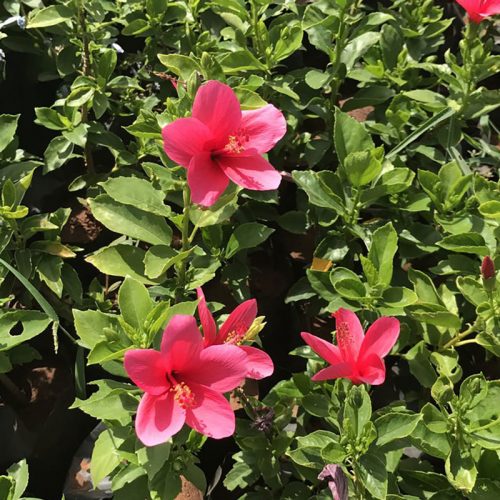
Please make sure you write "Hibiscus" if you choose to sponsor this tree via paypal
A genus in the Mallow family (malvaciae). A tea can be made from its flowers. Its flower is often depicted by surf brands as it is native to Hawaii.
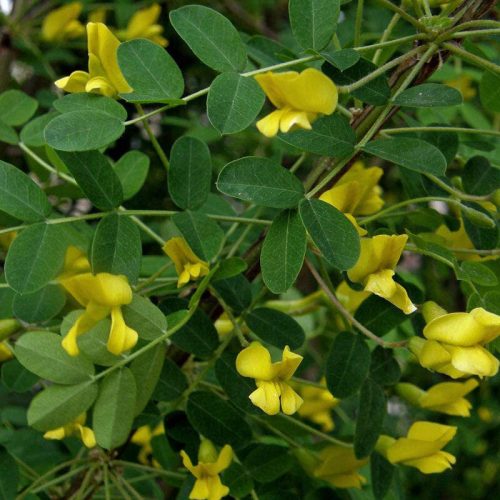
Please make sure you write "Siberian Pea" if you choose to sponsor this tree via paypal
Native to Siberia, Mongolia & Kazakhstan. A member of the pea family, Fabaceae, and so a legume. It can fix nitrogen at colder temperatures than other legumes. Very useful as a windbreak.
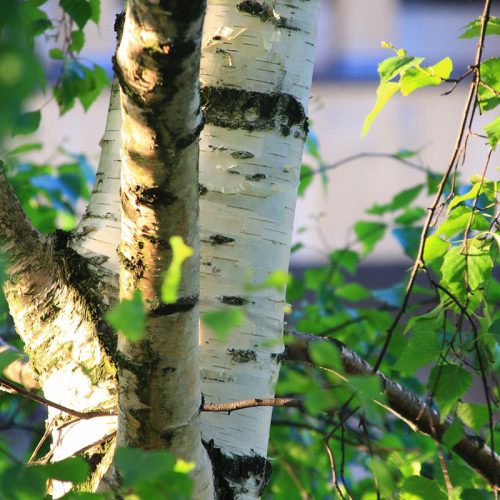
Please make sure you write "Birch" if you choose to sponsor this tree via paypal
National tree of Finland & Russia. Its wood has a natural resonance & so is sought after to make speaker cabinets. Native to northern hemisphere. Tolerates acid soils.



